
The Top 12 Terrarium Plants for Novices
Cultivating plants for terrariums is a pleasant activity that youngsters like. Moreover, terrariums are an excellent way to introduce plants indoors.
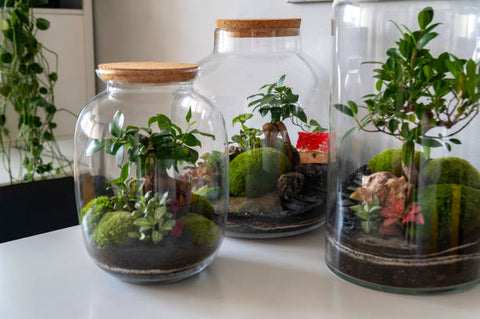
Cultivating plants in terrariums is also very simple. Plants will barely ever need watering and can flourish without effort for years in a closed terrarium. The creation and upkeep of a tabletop terrarium are simple. The most colourful and varied terrarium plants maintain their modest size.
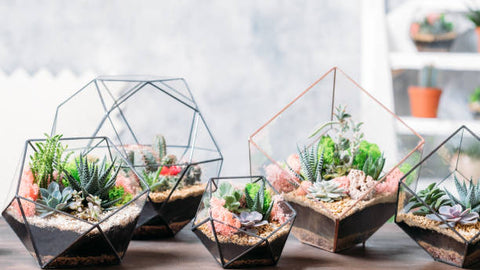
What exactly is a terrarium?
A terrarium is a collection of tiny ornamental plants grown in containers. Often translucent, terrarium containers provide a large enough hole for the gardener to access the plants. Making a custom terrarium on your own is the ultimate part of the process.
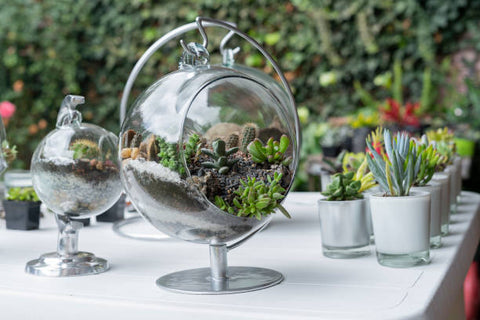
Terrarium Types
You must first be aware that there are various kinds of terrariums. Of course, the shape, depth, and colour matter, but from a pragmatic perspective, the opening is most important.
Open terrariums allow for optimum ventilation and have a wide entrance, or "mouth,". They are appropriate for plants like succulents that need dry air and struggle in humid environments.
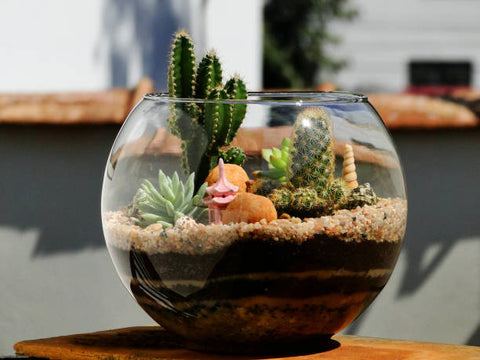
Plants that prefer humidity, such as ferns and insectivorous plants, are native to rainforests and can be grown in closed terrariums because they have a small entrance.
Succulents, air plants, and cacti are excellent examples of plants that thrive in open terrariums. In contrast, you should use tropical plants to create your closed terrarium, including ferns, mosses, epiphytes, carnivorous plants, and some decorative plants like fittonia.
Plant selection and upkeep will vary based on these conditioning options.
To transform that empty glass container into a lovely tiny garden, keep reading to see which plants you can "mix and match" in your open or closed terrariums!
Simple Terrarium Plant Advice
Nevertheless, which plants thrive in these tiny gardens? Consider the following advice:
Due to the terrarium's contained form, which holds moisture, you should generally choose plants that can handle dampness. Additionally, plants for terrariums must be able to withstand dim or indirect light.
Choose plants that will fit in your terrarium. The leaves of the plants should not touch the container's sides.
Although cacti and succulents can flourish in terrariums, it is ideal to use an open container because it will hold less moisture. Sand should also be used in the potting mixture to replicate the plants' natural habitat.
Ideas for Terrarium Plants
Here are some of the favourite terrarium plants out of the many available.
Baby’s Tears
Baby's Tears is a plant with tiny leaves that looks beautiful when grown in miniature. It is also known as Angel's Tears. In a terrarium, it thrives despite its prodigious growth, which can be an issue in an outside garden.
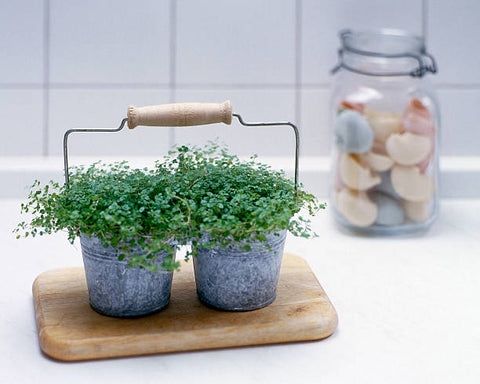
African Violet
Growing this attractive, purple-blossomed plant in an open planter can be challenging. They need a warm, humid habitat. Easy to supply both is a terrarium. Put the plant first in potting soil, then place it inside a glass container with a lid.
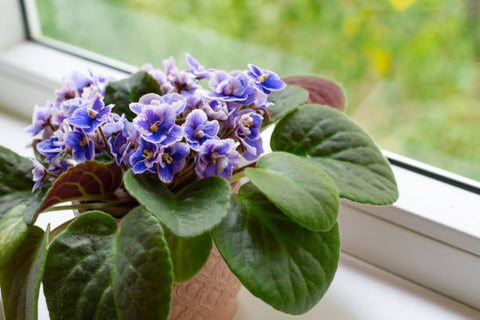
Nerve Plant
By including a nerve plant with a netlike pattern on its leaves in silvery white, burgundy, or pink, your terrarium will become tropical. This adorable tiny plant thrives in a container's high humidity. Trim it back if it begins to choke out other plants, then start new plants from the cuttings.
Cryptanthus bivittatus
Cryptanthus bivittatus, a bromeliad plant commonly known as the starfish plant, is a popular terrarium plant. The iridescent stripes on the strap-like leaves, which range in colour from scarlet to maroon, white, and deep green, nearly give the impression that they are glowing. The plant can also bloom with a little white flower in the centre. Starfish plants are suitable for terrariums due to their sluggish growth and variable leaf colours that alter with light intensity.
Creeping Fig
In your terrarium, a dwarf form of this tree-like plant can resemble a miniature forest. Indirect light or some shade is acceptable to creeping figs.
Spider Plant
Chlorophytum comosum, sometimes known as the spider plant, is one of the easiest houseplants to grow. Spider plants like damp environments and have long, narrow leaves that grow in rosettes. Spider plants are among a group of plants that enhance indoor air quality by removing dangerous pollutants from the air.
Air Plant
These extraordinary and miraculous plants don't even need soil to grow. They only require nutrients and water to grow. They are the most popular options for terrarium plants because of their thin, funnel-shaped, light green leaves.
Related Article: Air Plant Guide
False Shamrock (Oxalis Triangularis)
In the confines of your terrarium, the three triangular, dark and deep magenta leaves on each thin stem of the false shamrock will resemble parasols or strange magic mushrooms.
These lovely leaves have tiny veins that, up close, give them the appearance of butterfly wings.
And when the lovely, light pink-purple flowers emerge above the foliage, you won't regret it.
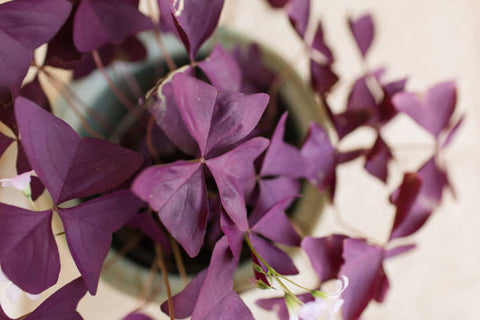
Strawberry Begonia
Fill your terrarium with lovely dark hunter-green leaves with light green veins that spread out horizontally to the ground like tiny shades for fairies, but don't forget to give strawberry begonia plenty of headroom because the flower-bearing stems will grow slender and tall, and purple-pink flowers will bloom like floral ballerinas or butterflies fluttering in the air.
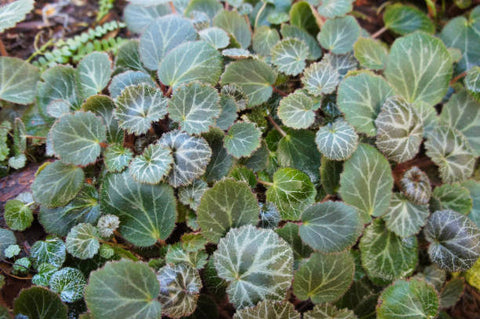
Echeveria Secunda
Echeveria Secunda is the ideal houseplant for creating a sophisticated, symmetrical, sculptural effect. These petals are placed precisely into a rosette that resembles a geometric masterpiece, such as the rose window of a gothic church or an abstract sculpture.
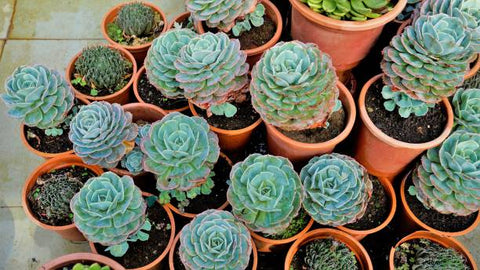
Polka Dot Plant
The polka dot plant offers leaves in a wide range of colours if you want an eye-catching display of hues in your terrarium throughout the year.
The leaves have a base colour and a lot of spots that are a different hue, occasionally even quite bright.
The lovely lanceolate leaves of this little evergreen shrub can have any combination of green, pink, magenta, white, and red.
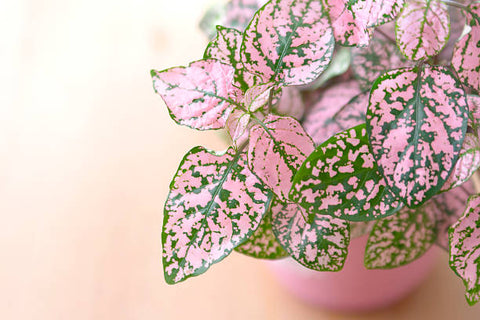
Kalanchoe
Imagine having a tuft of dark green, tall, succulent plants in your terrarium that are tall and have dark green leaves with white stripes that slant slightly like the flames of an imaginary fire.
There are a few considerations to make while choosing plants for your DIY terrarium:
Choose plants that will fit in your glass container. You don't want any vegetation to contact the container's sides because that will make your terrarium feel crowded.
The most likely plants to prosper in your terrarium are the ones that fare well in humid environments. Although cacti and succulents don't like humidity very much, you may make up for it by utilising a glass container.

Building a Terrarium
Select a Container
Half the fun of creating a terrarium is selecting the container and plants. You can purchase a variety of customised terrarium pots. You can make a terrarium with nearly any transparent (glass or plastic) container with a wide opening (with or without a lid). Aquariums, goldfish bowls, Wardian cases, cold frames, bell jars, tureens, apothecary jars, cloches, mason jars, glass cookie jars, and even sizable brandy snifters are examples of containers that work well. You can put your palm inside the container's broad opening to add drainage material, soil, plants, and decorative components.
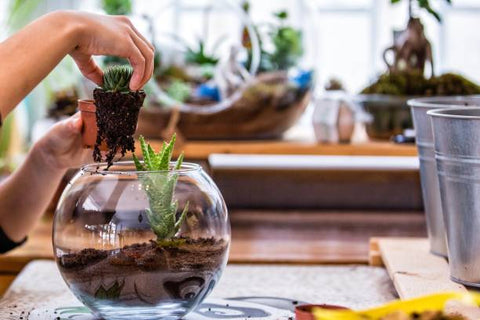
Choose the Plants
Most garden centres have miniature plants for terrariums, sometimes right next to the accessories for fairy gardens. Choose terrarium plants that can fit in your container and have a variety of foliage heights and forms, ideally without touching the terrarium's sides.
Develop Drainage Layers
You will need to make a drainage layer because the terrarium container lacks drainage holes, which prevent water from getting near the plant roots. Begin by adding a 2-inch layer of crushed stone or gravel to the terrarium's base.
Add moss and planting mix.
Prevent the potting soil from blending with the stones and charcoal, and add a layer of sheet moss next. The moss gives your terrarium additional visual interest.
Add a thin layer of moist, sterile potting soil using a large spoon or small trowel. Use potting soil without fertiliser added; terrarium plants don't require additional fertiliser.
Prepare the plants
Choose the layout of your terrarium before you start planting. Choose the locations for your tall and short plants.
Take the plants out of the nursery pots. If a plant is rootbound, try pulling the roots apart using a pair of small garden snips. While growing plants in a terrarium, root pruning, which involves removing a portion of a plant's roots, will slow a plant's growth. Remove any damaged or yellowed leaves as well.
Adding plants
Clear the plants of any extra soil that remains. Dig a hole for each plant using a long spoon or your fingers. Put each plant in its place, then use a soft patting motion to remove any air pockets and firmly anchor each one in the potting medium.
Decorate
Place miniature figurines, shells, colourful stones, or other creative embellishments within the terrarium if you'd like to embellish it.
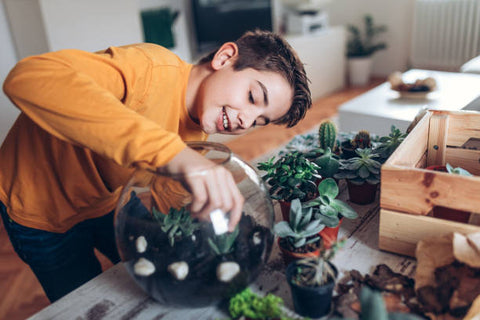
Conclusion
Gardening under glass is for you if you lack the time, space, or energy to nurture plants indoors. Terrariums may breathe new life into your home's design because of their base of mosses, leafy plants, vines, and barks.
Also, you can give homemade terrariums to your loved ones.
Also, these little ecosystems offer a wealth of therapeutic advantages, much like planted aquariums. They help to filter the air and act as natural humidifiers. Also, wouldn't you agree that caring for little plants in a glass jar is enjoyable?
Now, if you'd like to start making things you can call your own, try gardening via a glass!
Succulent Plants
-
Original price Rs. 299.00Original price Rs. 299.00 - Original price Rs. 299.00Original price Rs. 299.00Current price Rs. 129.00Rs. 129.00 - Rs. 129.00Current price Rs. 129.00
Thimble Cactus
Compact & Cute: Thimble Cactus in a 5.5 cm pot is ideal for small spaces like desks, windowsills, or corner shelves. Sun-Loving & Hardy...
View full detailsOriginal price Rs. 299.00Original price Rs. 299.00 - Original price Rs. 299.00Original price Rs. 299.00Current price Rs. 129.00Rs. 129.00 - Rs. 129.00Current price Rs. 129.00Sale -
Original price Rs. 299.00Original price Rs. 299.00 - Original price Rs. 299.00Original price Rs. 299.00Current price Rs. 129.00Rs. 129.00 - Rs. 129.00Current price Rs. 129.00
Mammillaria Elongata 'Copper King' Cactus Plant
Rare & Attractive Succulent: Mammillaria Elongata 'Copper King' features copper-tinted green stems with star-like white spines, making it a v...
View full detailsOriginal price Rs. 299.00Original price Rs. 299.00 - Original price Rs. 299.00Original price Rs. 299.00Current price Rs. 129.00Rs. 129.00 - Rs. 129.00Current price Rs. 129.00Sale -
Original price Rs. 299.00Original price Rs. 299.00 - Original price Rs. 299.00Original price Rs. 299.00Current price Rs. 129.00Rs. 129.00 - Rs. 129.00Current price Rs. 129.00
Cereus Forbesii Monstrose Cactus Mini
🌵 Rare Crested Growth FormShowcases a unique fan-like cresting growth, making each plant one-of-a-kind and a true collector’s gem. 🪴 Compact &a...
View full detailsOriginal price Rs. 299.00Original price Rs. 299.00 - Original price Rs. 299.00Original price Rs. 299.00Current price Rs. 129.00Rs. 129.00 - Rs. 129.00Current price Rs. 129.00Sale -
Original price Rs. 249.00Original price Rs. 249.00 - Original price Rs. 249.00Original price Rs. 249.00Current price Rs. 149.00Rs. 149.00 - Rs. 149.00Current price Rs. 149.00
Echeveria 'Cubic Frost' Succulent Plant
Pot Size : 7 cm
Original price Rs. 249.00Original price Rs. 249.00 - Original price Rs. 249.00Original price Rs. 249.00Current price Rs. 149.00Rs. 149.00 - Rs. 149.00Current price Rs. 149.00Sale -
Original price Rs. 169.00Original price Rs. 169.00 - Original price Rs. 169.00Original price Rs. 169.00Current price Rs. 129.00Rs. 129.00 - Rs. 129.00Current price Rs. 129.00
Echeveria 'Cubic Frost' Small Succulent Plant
Pot Size : 7 cm
Original price Rs. 169.00Original price Rs. 169.00 - Original price Rs. 169.00Original price Rs. 169.00Current price Rs. 129.00Rs. 129.00 - Rs. 129.00Current price Rs. 129.00Sale

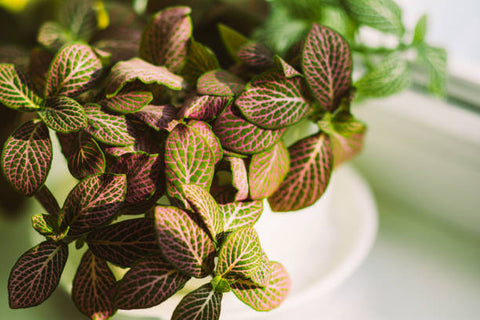
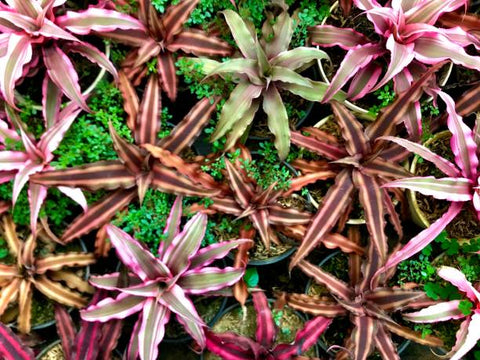


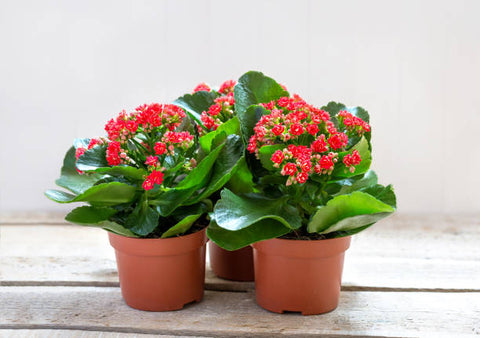










Leave a comment